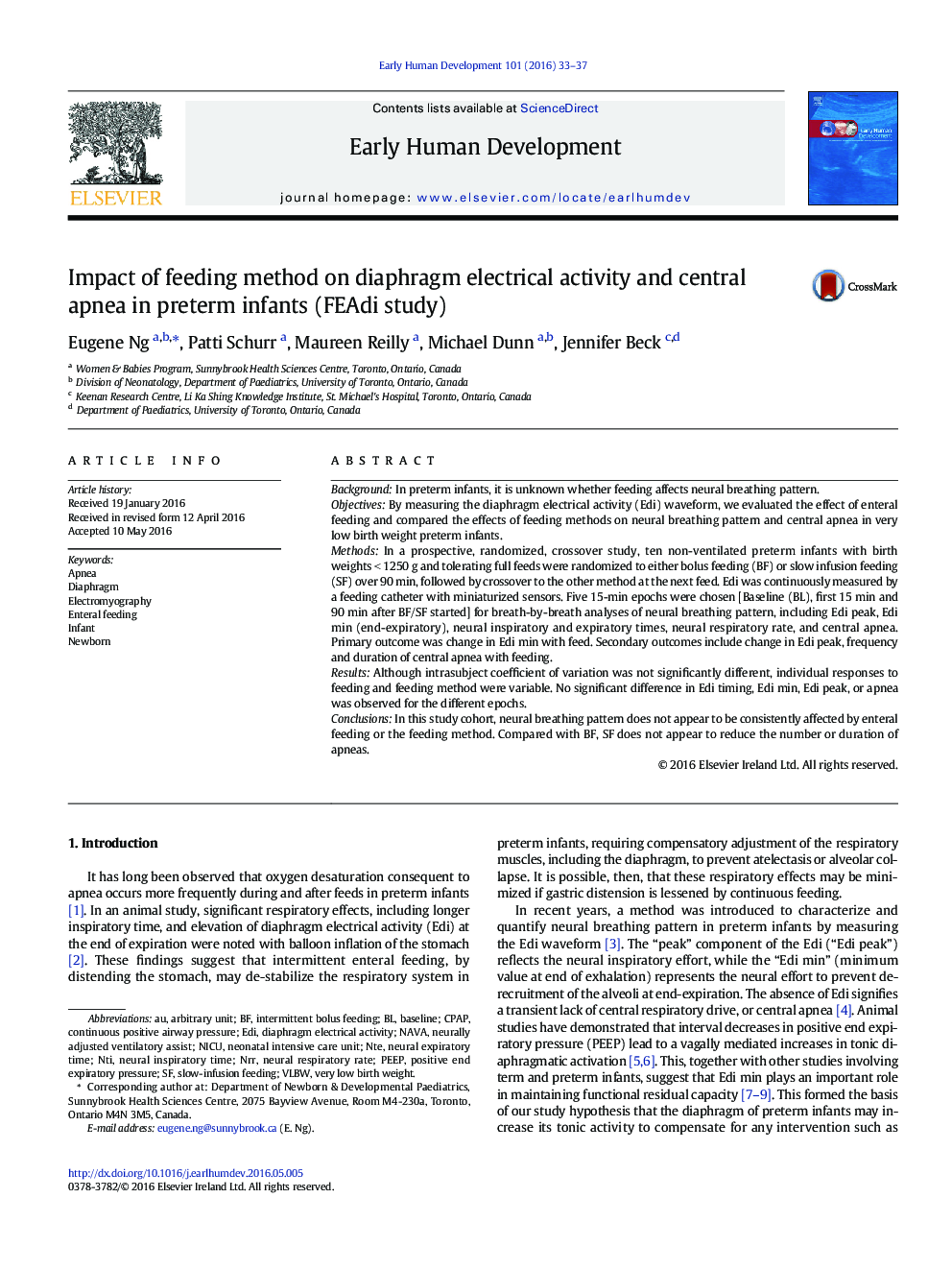| Article ID | Journal | Published Year | Pages | File Type |
|---|---|---|---|---|
| 3916664 | Early Human Development | 2016 | 5 Pages |
•A novel approach to evaluate neural breathing pattern in preterm infants was proposed.•Feeding was associated with variable effects on neural breathing pattern.•Feeding did not increase work of the diaphragm in this cohort of preterm infants.•Feeding did not lead to increase in apnea in this cohort of preterm infants.
BackgroundIn preterm infants, it is unknown whether feeding affects neural breathing pattern.ObjectivesBy measuring the diaphragm electrical activity (Edi) waveform, we evaluated the effect of enteral feeding and compared the effects of feeding methods on neural breathing pattern and central apnea in very low birth weight preterm infants.MethodsIn a prospective, randomized, crossover study, ten non-ventilated preterm infants with birth weights < 1250 g and tolerating full feeds were randomized to either bolus feeding (BF) or slow infusion feeding (SF) over 90 min, followed by crossover to the other method at the next feed. Edi was continuously measured by a feeding catheter with miniaturized sensors. Five 15-min epochs were chosen [Baseline (BL), first 15 min and 90 min after BF/SF started] for breath-by-breath analyses of neural breathing pattern, including Edi peak, Edi min (end-expiratory), neural inspiratory and expiratory times, neural respiratory rate, and central apnea. Primary outcome was change in Edi min with feed. Secondary outcomes include change in Edi peak, frequency and duration of central apnea with feeding.ResultsAlthough intrasubject coefficient of variation was not significantly different, individual responses to feeding and feeding method were variable. No significant difference in Edi timing, Edi min, Edi peak, or apnea was observed for the different epochs.ConclusionsIn this study cohort, neural breathing pattern does not appear to be consistently affected by enteral feeding or the feeding method. Compared with BF, SF does not appear to reduce the number or duration of apneas.
